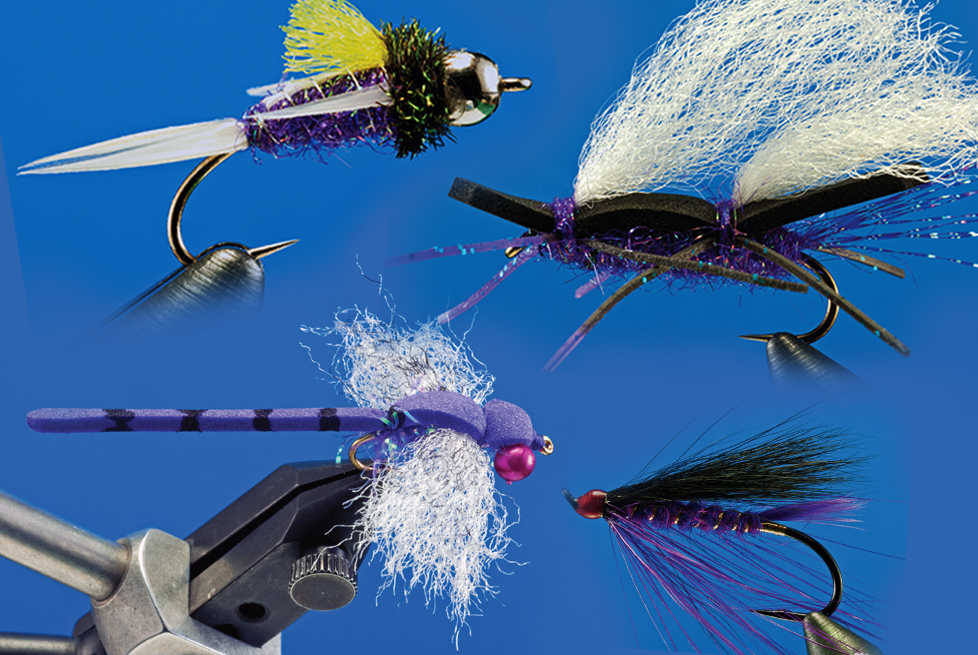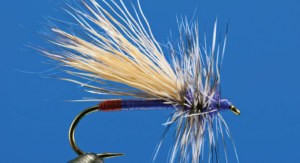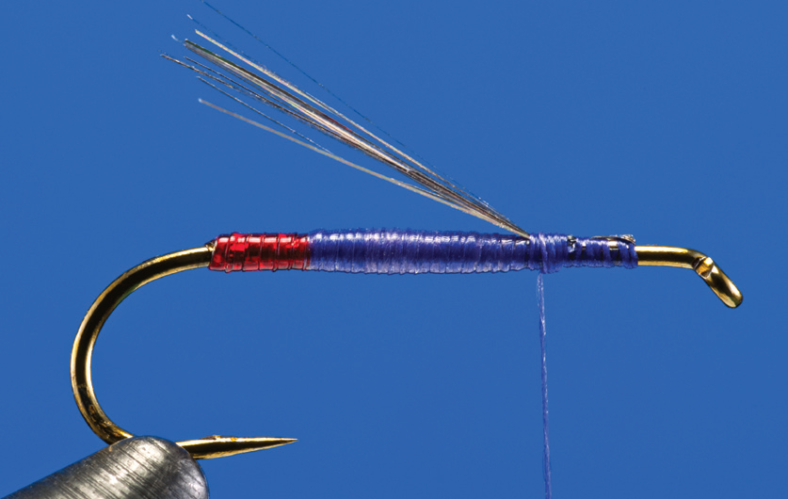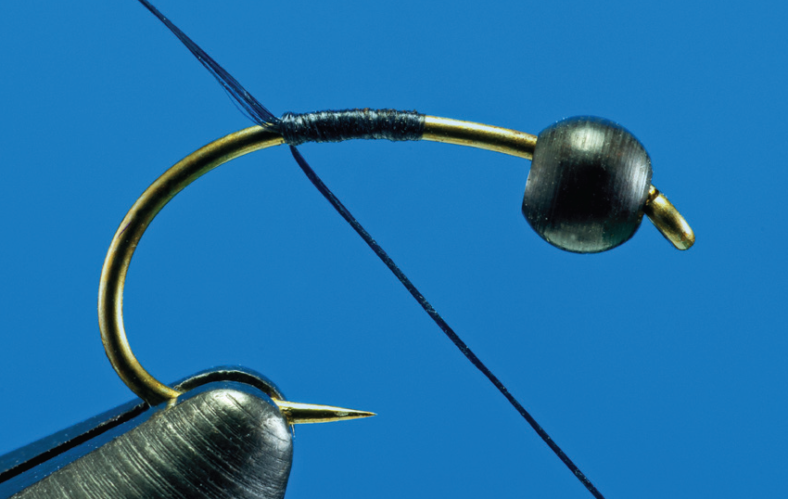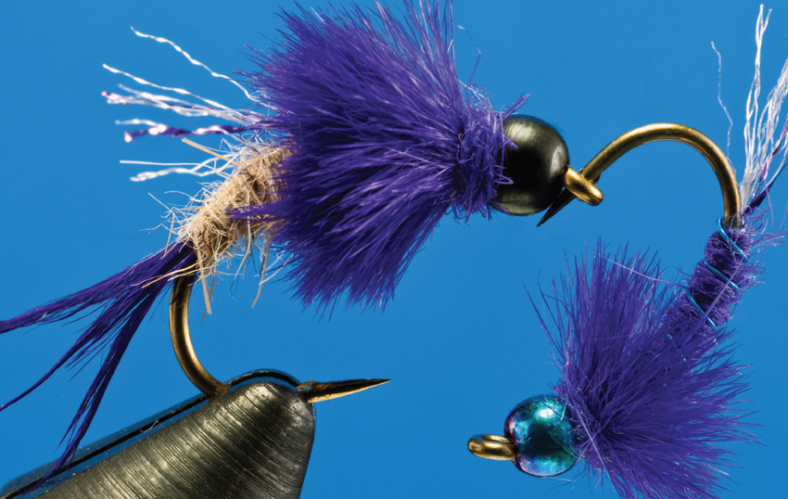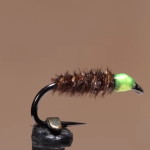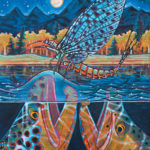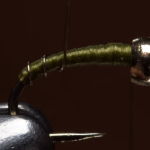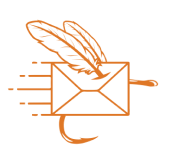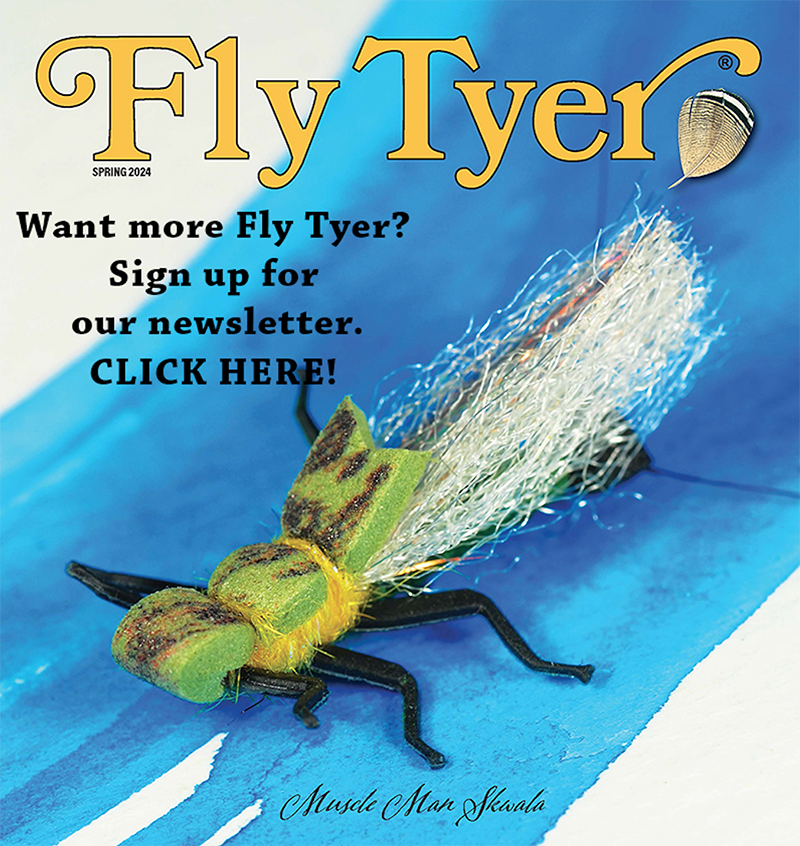Known as the color of royalty, purple is also an important color for tying fish-catching flies. Our authors share a fly box full of their favorite patterns
[by Russ Forney & Al Ritt]
THE NUMBER OF SMARTLY DRESSED TROUT FLIES FLAUNTING PURPLE IS ALWAYS INCREASING. It is not an epic change, but rather an incremental procession of purple hues migrating across the pattern palette. This trend is possible because of the evolution in fly tying materials; there is an unabated creep of purple tinsel, dubbing, beads, foam, herls, hairs, and hackles claiming retail space. Purple is “happening” to the fly tying world.

Parachute Purple Rooster
Hook: Standard dry fly hook, sizes 18 to 12.
Thread: Black 8/0 (70 denier).
Tail: Pheasant tail fibers.
Abdomen: Pheasant tail fibers.
Rib: Silver wire.
Thorax: Coarse purple dubbing.
Wing post: White calftail.
Hackle: Grizzly.
Anglers are seldom neutral about purple. The color elicits a love it-or-leave-it response that kindles strong reactions at both ends of the spectrum. Purple generates its share of fly shop debates. Its attributes or detriments as a pattern color do not follow any particular logic; as often happens in the absence of clear truth, opinion and loud argument compensate for a lack of facts. And purple is certainly a loud color.
Some purple flies are variations of established patterns. Other flies exhibit a purple-colored theme in a more creative manner, crowding the edge of reality with purple trailing shucks, wings, and other body parts. There are purple midges, emergers, streamers, terrestrials, caddisflies, and attractors. You probably already have purple in your fly box.
What’s So Special About Purple?
Conventional-tackle bass fishermen discovered purple long ago, and purple plastic baits, especially purple worms, remain popular. When it comes to freshwater flies, purple patterns have been at home on salmon and steelhead rivers for years. The success of purple steelhead flies might account for the expansion of purple materials in fly shops usually dedicated to serving trout anglers. Applying purple to a wider range of patterns seems prudent, or maybe it’s just a fad fancied by fly tiers who continually experiment and test new ideas.
Purple patterns have endured and new flies continue to flourish, suggesting a measure of success when these flies hit the water. It is difficult to imagine fly shops, outfitters, fly tiers, or anglers investing in patterns that do not catch fish. Purple flies are proving as effective as other colors and they appeal to imaginative anglers.

Deep Purple Peril Variant
Hook: Tiemco TMC2488H, size 18.
Bead: Silver tungsten.
Thread: Black 8/0 (70 denier).
Tail: UV pearl Krystal Flash.
Body: Tying thread, coated with Clear Cure Goo UV after wrapping the rib.
Rib: Purple Flashabou.
Wing: Three strands of UV pearl Krystal Flash.
Collar: Purple peacock.
A Purple-Fly Sampler
The accompanying photographs and pattern recipes show how popular purple has become among fly anglers. Some conventional patterns were adapted to capitalize on the effectiveness of purple, while others have been designed specifically to incorporate or feature the color purple. Several flies in the sample were discovered in the bins of local fly shops, and others were dispensed by guides and have proved themselves in action. Whether using purple is part of the evolution of an existing pattern or a new creation from the bench of a fly tying inventor, all these flies have shown their colors in many lakes and streams.
We are including patterns that show how creative tiers have worked purple into fly designs. In some flies, the color complements or highlights selected body parts. In other patterns, purple dominates the color scheme. Note that purple is not necessarily brash or outlandish; sometimes it accentuates the color scheme and contributes to the visual character of the pattern. And what is the visual character of a purple fly?
After tying many of the patterns featured in the accompanying photographs, interviewing tiers and outfitters, and studying dozens of flies, we are still not sure why purple appeals to the fish, but one thing is certain: There will be a few more purple patterns in the fly bins next season and a few more anglers casting purple flies on their favorite waters.
Russ Forney and Al Ritt are regular contributors to this magazine. Al lives in Colorado, and Russ lives in Wyoming.
